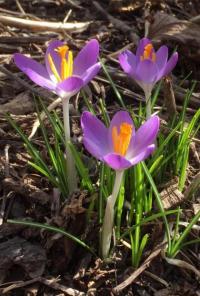 The vernal equinox is a handful of days away, announcing the astronomical beginning of spring. On a morning last week, as dawn chased the darkness from the forest's edge, the moon was a glowing, golden plate resting on the western horizon. Tiny purple crocuses peeked up through pale brown grasses. Bright daffodils nodded on slender stems. Lacy green fronds adorned the old willow stump. On the edge of winter and spring, the moon, stars, and sun grandly and reliably spun a new day. The land offered delicate, deliberate promise of renewal and returning life.
The vernal equinox is a handful of days away, announcing the astronomical beginning of spring. On a morning last week, as dawn chased the darkness from the forest's edge, the moon was a glowing, golden plate resting on the western horizon. Tiny purple crocuses peeked up through pale brown grasses. Bright daffodils nodded on slender stems. Lacy green fronds adorned the old willow stump. On the edge of winter and spring, the moon, stars, and sun grandly and reliably spun a new day. The land offered delicate, deliberate promise of renewal and returning life.
But we know that around and just beyond this idyll, a maelstrom whirls at speed, carrying all manner of things ill and fearful. The virus raging through global humanity is a visceral, microbial emblem of a planet and a world profoundly undone.
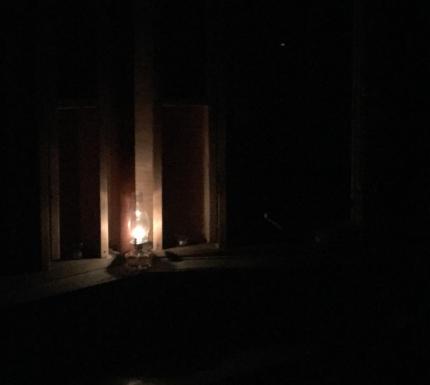 A new year’s turning at Rolling Ridge. The moment held a peculiar potency, for it passed on the hinge of a turbulent decade, when so much is at stake. The Earth and all her inhabitants, all that we love, is in dire straits. There is an instinct within us in such times to gather together and rekindle the fires of meaning, vision, love, hope. Perhaps the holiest grace of Rolling Ridge is that it offers a sacred, wild space where these impulses of the human soul can flourish.
A new year’s turning at Rolling Ridge. The moment held a peculiar potency, for it passed on the hinge of a turbulent decade, when so much is at stake. The Earth and all her inhabitants, all that we love, is in dire straits. There is an instinct within us in such times to gather together and rekindle the fires of meaning, vision, love, hope. Perhaps the holiest grace of Rolling Ridge is that it offers a sacred, wild space where these impulses of the human soul can flourish.
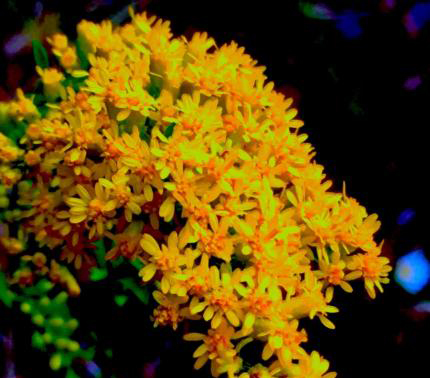
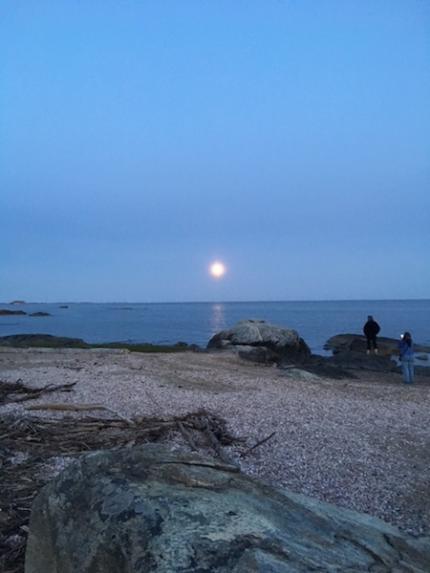
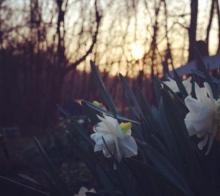
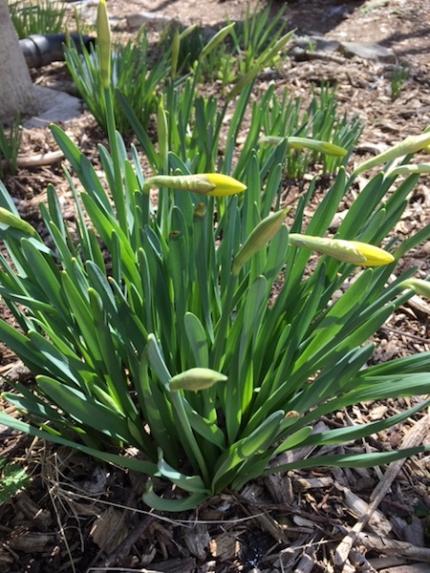

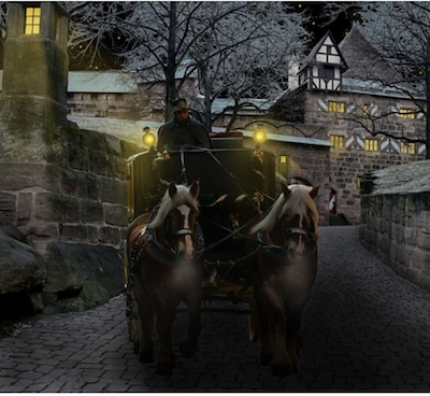
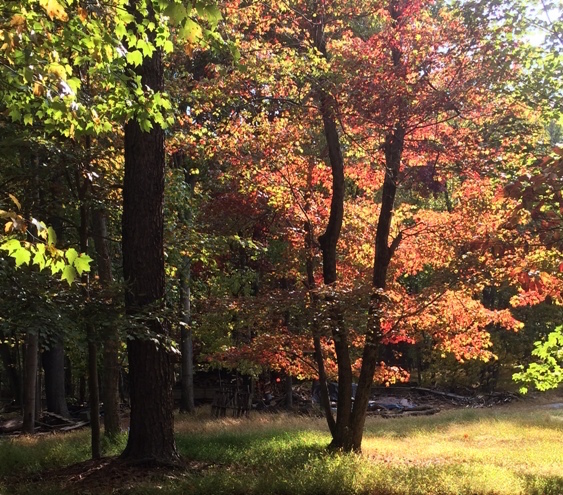

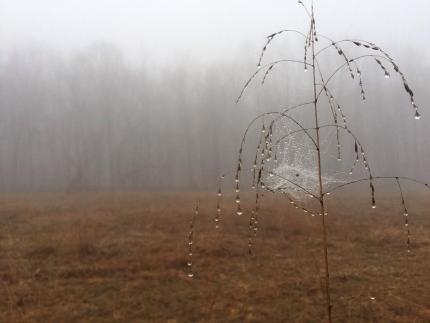
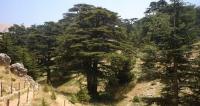 In the human imagination, and as they have been throughout the ancient world, the cedars of Lebanon are sacred trees, planted by God. They are long-growing, strong, the material of temples and voyages in sea-roaming ships.
In the human imagination, and as they have been throughout the ancient world, the cedars of Lebanon are sacred trees, planted by God. They are long-growing, strong, the material of temples and voyages in sea-roaming ships. 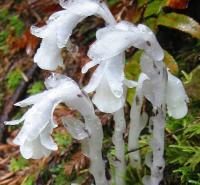 Monotropa uniflora is a small plant, wholly white, a pale translucent flute known as Ghost Pipe or Ghost Plant. It bends at the top and has but a single flower. Without chlorophyll, it cannot create energy as green plants do, from the sun. Instead it draws energy from the fungi that cluster in the roots of trees as they reach into the dark earth. Ghost Pipes appear rarely around here, in the threshold time between spring and summer, albino messengers from another realm. Josh saw a covey of them in the Memorial Grove during his run on a cool misty morning. He was struck by their presence in that place of remembrance, reflecting, “It felt eerie and beautiful all at the same time.”
Monotropa uniflora is a small plant, wholly white, a pale translucent flute known as Ghost Pipe or Ghost Plant. It bends at the top and has but a single flower. Without chlorophyll, it cannot create energy as green plants do, from the sun. Instead it draws energy from the fungi that cluster in the roots of trees as they reach into the dark earth. Ghost Pipes appear rarely around here, in the threshold time between spring and summer, albino messengers from another realm. Josh saw a covey of them in the Memorial Grove during his run on a cool misty morning. He was struck by their presence in that place of remembrance, reflecting, “It felt eerie and beautiful all at the same time.”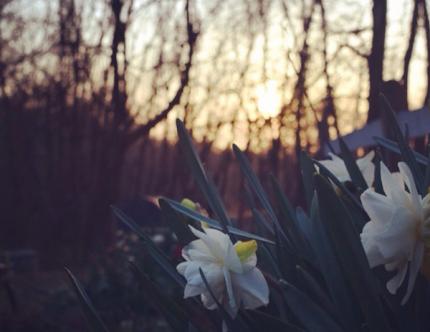
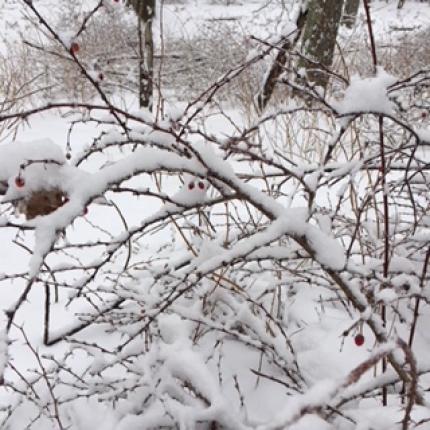
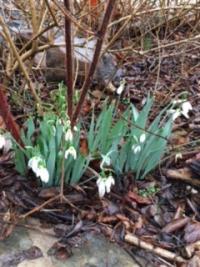 It must be the season, or the year. This snowless winter I was part of three retreats, one per month, about finding the grace in darkness even while leaning toward the light, about the essential rhythms of descent and renewal which keep our lives and our planet from ending, about the fertile dark as soil for the seeds of hope. There seems to be a need in these shadowy times to seek the lantern of soul and to hold onto one another while we quest, hands clasped in sacred circles. During these retreats, we danced in this way in fields in the late afternoon as the sun turned rose and coral and the moon appeared delicately in the lambent sky.
It must be the season, or the year. This snowless winter I was part of three retreats, one per month, about finding the grace in darkness even while leaning toward the light, about the essential rhythms of descent and renewal which keep our lives and our planet from ending, about the fertile dark as soil for the seeds of hope. There seems to be a need in these shadowy times to seek the lantern of soul and to hold onto one another while we quest, hands clasped in sacred circles. During these retreats, we danced in this way in fields in the late afternoon as the sun turned rose and coral and the moon appeared delicately in the lambent sky.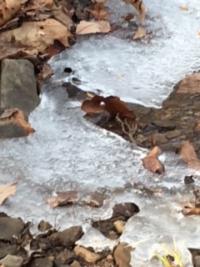 How is one to live a moral and compassionate existence when one is fully aware of … the horror inherent in life, when one finds darkness not only in one’s culture but within oneself? ... One must live in the middle of contradiction, because if all contradiction were eliminated at once life would collapse. There are simply no answers to some of the great pressing questions. You continue to live them out, making your life a worthy expression of leaning into the light. -- Barry Lopez
How is one to live a moral and compassionate existence when one is fully aware of … the horror inherent in life, when one finds darkness not only in one’s culture but within oneself? ... One must live in the middle of contradiction, because if all contradiction were eliminated at once life would collapse. There are simply no answers to some of the great pressing questions. You continue to live them out, making your life a worthy expression of leaning into the light. -- Barry Lopez